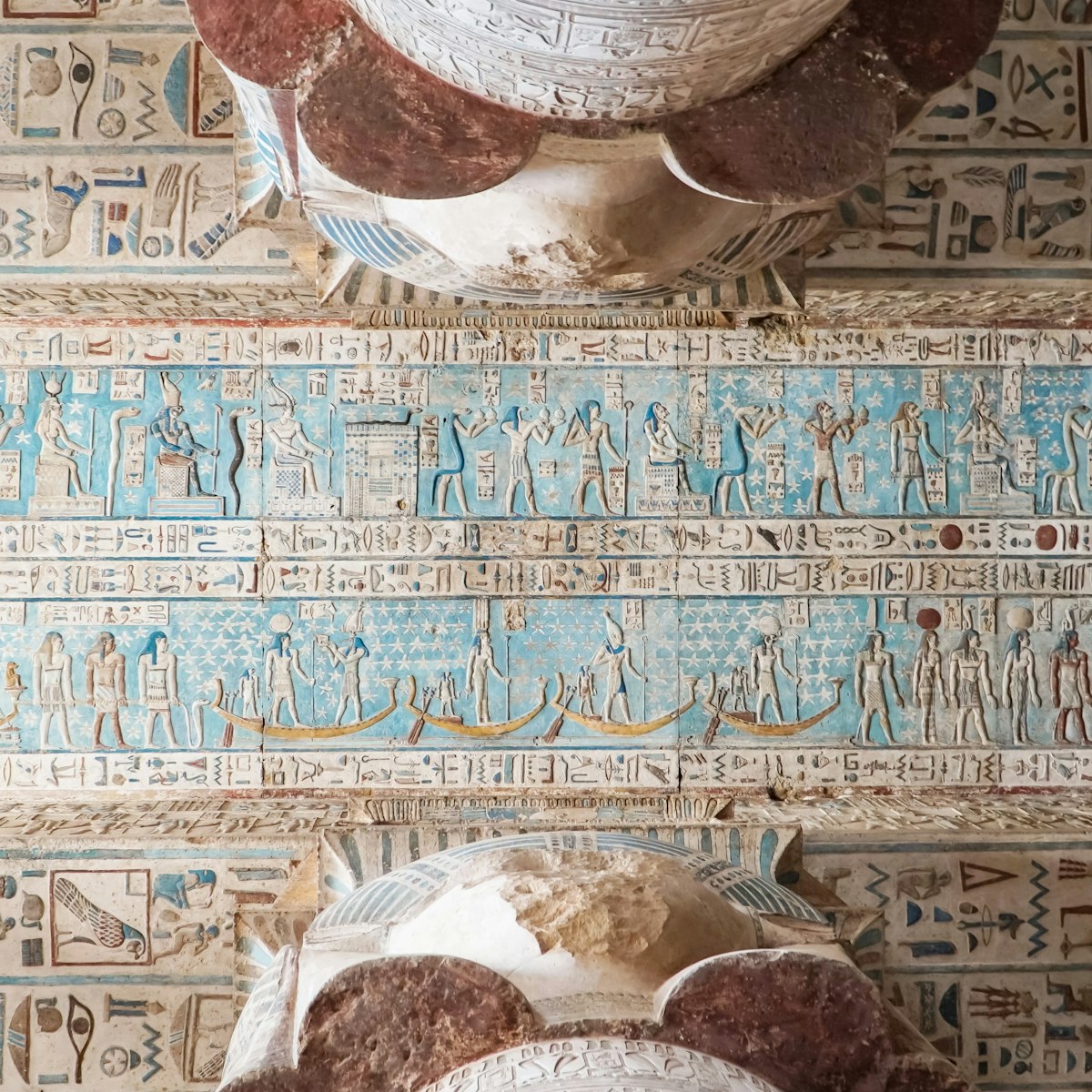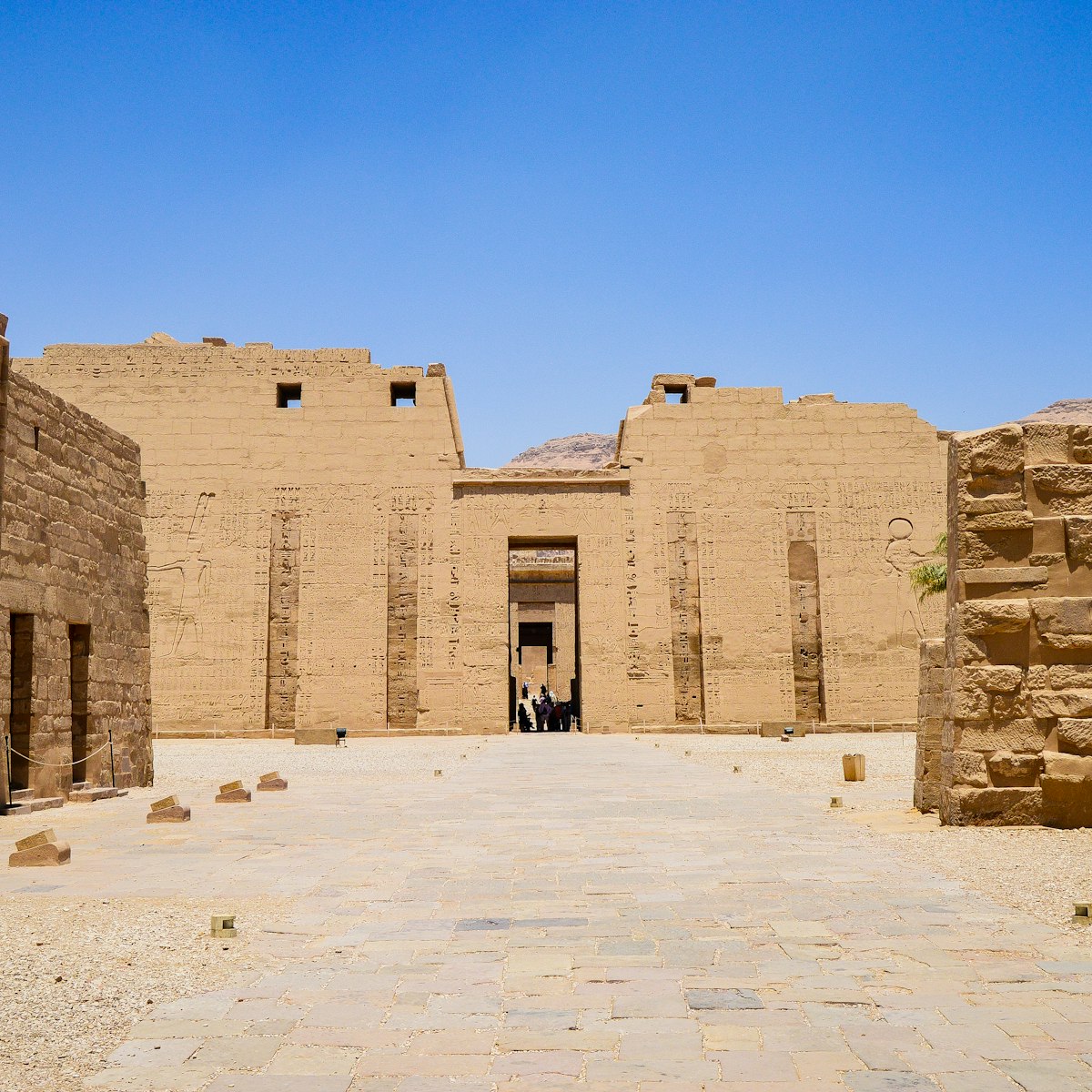Hidden in the hills between high limestone cliffs, and reached only via a steep staircase that crosses an even steeper ravine, this tomb demonstrates the lengths to which the ancient pharaohs went to thwart the cunning of the ancient thieves. Tuthmosis III (1479–1425 BC), an innovator in many fields, and whose military exploits and stature earned him the description ‘the Napoleon of ancient Egypt’, was one of the first to build his tomb in the Valley of the Kings.
It is a steep climb up and down, but secrecy was the pharaoh's utmost concern: he chose the most inaccessible spot and designed his burial place with a series of passages at haphazard angles and fake doors to mislead or catch potential robbers. The shaft, now traversed by a narrow gangway, leads to an antechamber supported by two pillars, the walls of which are adorned with a list of more than 700 gods and demigods. As the earliest tomb in the valley to be painted, the walls appear to be simply giant versions of funerary papyri, with scenes populated by stick men. The burial chamber has curved walls and is oval in shape; it contains the pharaoh’s quartzite sarcophagus, which is carved in the shape of a cartouche.







